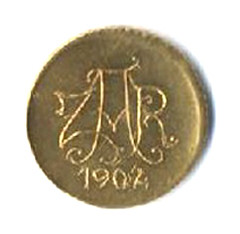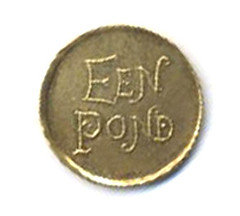
PREV ARTICLE
FULL ISSUE
PREV FULL ISSUE
FEATURED WEB STE: THE VELDPOND COINAGEThis week's Featured Web Site is about the Veldpond coins issued near the end of the Anglo Boer War.The ZAR Government on the Battle Field (Regering te Velde) gave permission to mint gold pounds. With this, the ZAR Field Mint (Munt te Velde) came into existence under authority of General Muller, who had to ensure that the requirements of the Coinage Act of the ZAR (no 14 of 1891) would be met. This law determined that a pound sterling should weigh 7.98805 grams and contain 7.3244 grams of pure gold. Interesting note: Since the occupation of Pretoria, the British regarded the ZAR as being under their rule. In February 1901 Lord Milner proclaimed that both defacing and making coins was prohibited24. The manufacturing of the Veldpond at Pilgrim's Rest could therefore, under the British proclamation, be regarded as an unlawful act. The rolling mill is the most important machine in the whole process of making gold coins, according to Perrin. He prescribed cylinders of no less than 1 ft in diameter (30 cm). Mines did have big rolling machines with which steel plates were bent. A logical conclusion is that the minting team used that machine for rolling out the gold. The cast gold strip had to be rolled out several times until the correct thickness was reached. After each rolling session, the gold hardened and had to go through a process of annealing that entails heating it in an oven at a low temperature (200° Celsius) for 45 minutes and then cooling down slowly. When the desired thickness was reached, the gold strip was softened once more so that it could be cut into circular discs and the design imprinted on them. The correct heat treatment of the gold plates was most important as it could lengthen the life of the dies.


veldpond.co.zaWayne Homren, Editor The Numismatic Bibliomania Society is a non-profit organization promoting numismatic literature. See our web site at coinbooks.org. To submit items for publication in The E-Sylum, write to the Editor at this address: whomren@gmail.com To subscribe go to: https://my.binhost.com/lists/listinfo/esylum All Rights Reserved. NBS Home Page Contact the NBS webmaster 
|